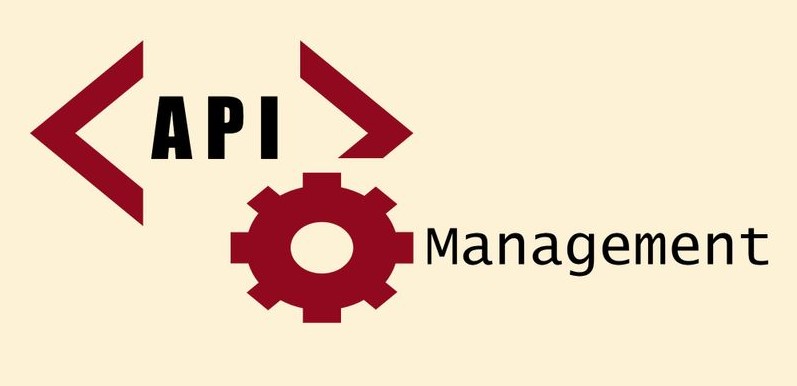API Management

Unlocking the Power of APIs with API Management
In today’s connected world, APIs (Application Programming Interfaces) act as the bridge between applications and services, enabling seamless data exchange and communication. They play a crucial role in driving innovation, fostering collaboration, and powering digital transformation across industries. However, managing a growing API ecosystem can be challenging, especially in terms of security, visibility, and governance. This is where API Management comes in, providing a comprehensive solution to streamline API operations, enhance their value, and ensure their smooth functioning.
API Management empowers organizations to manage their APIs effectively, ensuring robust security and streamlined operations. It safeguards APIs from unauthorized access and enables seamless data exchange, fostering innovation and collaboration.
Types of APIs: Tailored Tools for Digital Interactions
-
Open APIs: Open Doors to Innovation: Open APIs are publicly accessible, inviting developers to integrate with them and build innovative applications. These APIs are open and available for anyone to use. Examples of public APIs include the Google Maps API, the Facebook API, and the Twitter API.
-
Partner APIs: Collaborative Connections: Partner APIs are designed for specific partners or customers, enabling controlled access to data and functionalities. These APIs are available to a select group of partners, such as businesses that have a relationship with the API provider. Examples of partner APIs include the Salesforce API and the Google Ads API.
-
Private/Internal APIs: Seamless Internal Operations: Internal APIs streamline communication within an organization, connecting internal applications and services. They are typically used to connect internal applications or services.
API Protocols: The Language of API Communication
API protocols define the rules and standards that govern how applications communicate with each other using APIs. They specify the format of data that is exchanged, the methods used to interact with resources, and the overall structure of the API. Common API protocols include:
- REST (Representational State Transfer): REST is a lightweight, stateless protocol that uses HTTP methods (GET, POST, PUT, DELETE) to represent and manipulate resources. It is a popular choice for web APIs due to its simplicity and flexibility.
- SOAP (Simple Object Access Protocol): SOAP is an XML-based protocol that uses XML messages to exchange data between applications. It is a more complex protocol than REST but is often used in enterprise environments where security and interoperability are critical.
- gRPC (Google Remote Procedure Call): gRPC is a high-performance protocol that uses HTTP/2 for transport and Protocol Buffers for data serialization. It is a good choice for microservices architectures and applications that require high performance and low latency.
- GraphQL: GraphQL is a query language for APIs that allows clients to specify the exact data they need, rather than receiving a full set of data by default. It is a newer protocol but is gaining popularity due to its flexibility and efficiency.
- RPC (Remote Procedure Call): RPC is a protocol that allows clients to invoke methods on remote servers as if they were local procedures. It is a more traditional protocol but is still used in some applications, such as distributed systems.
API Architecture: A Structured Approach for Effective Management
API Management solutions typically follow a layered architecture, providing a structured framework for API governance:
- API Gateway: The Central Hub for API Access: The API gateway serves as the gatekeeper, ensuring secure and controlled access to APIs. It handles authentication, authorization, routing, and other essential functions, protecting APIs from unauthorized access and cyberattacks.
- API Manager: Orchestrating the API Lifecycle: The API manager serves as the orchestrator, managing the API lifecycle from discovery to documentation, versioning, deprecation, and retirement. It ensures a consistent, well-maintained, and governable API ecosystem.
- Developer Portal: Empowering Developers with Self-Service Access: The developer portal provides developers with a self-service platform, offering comprehensive documentation, access keys, sandboxes, and testing tools. It simplifies API adoption, accelerates integration, and enhances developer productivity.
Authentication Methods: Securing API Access with Strength
There are many different API authentication methods available, each with its own strengths and weaknesses. Some of the most common methods include:
- HTTP Basic Authentication: This is the simplest method, but it is also the least secure. It involves sending the user’s username and password in plain text in the HTTP header. This makes it vulnerable to eavesdropping and man-in-the-middle attacks.
- API Keys: API keys are secret tokens that are used to authenticate API requests. They are more secure than HTTP Basic Authentication, but they can still be compromised if they are leaked or stolen.
- OAuth 2.0: OAuth 2.0 is an authorization protocol that allows users to grant third-party applications access to their resources without sharing their passwords. It is a secure and flexible method of API authentication, and it is widely used by many popular websites and services.
- JSON Web Tokens (JWTs): JWTs are tokens that contain information about the user and their permissions. They are signed by the API provider, which makes them difficult to forge. JWTs are a popular choice for API authentication because they are secure and easy to use.
The most recommended and secure authentication method for APIs is OAuth 2.0. It is a widely used and well-supported protocol that provides a number of security benefits, including:
- It allows users to authenticate with the API without sharing their passwords. This helps to protect users from phishing attacks and other forms of password theft.
- It allows users to grant different levels of access to third-party applications. This helps to protect users’ data and privacy.
- It is a stateless protocol. This means that the API server does not need to store any state information about the user, which makes it more difficult for attackers to exploit vulnerabilities.
If you are developing an API, it is highly recommended that you use OAuth 2.0 for authentication. It is the most secure and flexible method available.




